Treating Brain Damage with Cord Blood
There are many causes and symptoms of brain damage. Infections, trauma and chronic inflammation can lead to longterm problems in the brain, causing difficulty in motor control, learning and processing information and interacting with others. Researchers are testing cord blood as an treatment option for those with brain damage.
After a transplant, cells naturally migrate to distressed areas. When patients with brain damage received cord blood therapy, the new cells made their way to damaged areas, improving motor functions and cognitive reasoning. In the future, medical experts estimate severe brain trauma, which has few treatment options, will be fully curable with cord blood stem cells.
Brain injury statistics
TBI (Traumatic Brain Injury)
- 1.4 million patients diagnosed every year
- 50,000 deaths each year
- 90,000 debilitating injuries annually
Cerebral Palsy
- 2 million Americans have this disease
- 10,000 babies are diagnosed with CP annually
Stroke
- 4 million Americans are suffering from the after effects of stroke
- Tissue death, a dangerous side effect, often results from stroke
Future treatment using cord blood
While major brain damage remains untreatable, recent stem cell clinical trials may open the door to new therapy options in the near future.
Newborn stem cells, exclusively found in cord blood, work with other brain cells to repair neurological damage and regenerate brain tissue. Cord blood stem cells are also diverse (embryonic), meaning they can develop into multiple types of cells once inside the body.
Depending on the individual, cord blood cells can:
- Replace damaged cells
- Aid endogenous cells in the healing process
- Regenerate organ and nerve tissue
Regardless of where they are injected, cord blood cells travel to damaged areas. From there, the cells naturally adapt to their environment, and begin the healing process. In clinical trials, cord blood cells prevented further neurological damage and improved the subject’s cognitive functions.
Newborn stem cells are able to cross the “blood-brain barrier.” This means, even if they are injected into the bloodstream, cells make their way to the brain and repair damage. In certain cases, injected cells showed therapeutic behavior, rapidly improving motor functions.
Specific case studies
While most clinical trials for cord blood are ongoing, stem cell research has shown benefits for the following conditions:
- Traumatic brain injury – Since newborn cells help repair brain damage, researchers believe future cord blood treatment is very likely. These therapies repair neurological, cognitive, and motor skill deficits caused by TBI.
- Stroke – According to multiple studies, cord blood cells help patients recover from functional damage after a stroke. While modern medications are only useful a few hours after a stroke, cord blood works up to 48 hours later. This means patients suffering from a stroke have significantly more time to receive treatment.
Ongoing clinical trials
Clinical trials testing the benefits of cord blood take place all over the country. Medical experts are researching the effects of stem cells on patients with traumatic brain injury, cerebral palsy, and other neurological damage.
These clinical trials include:
Duke University Medical Center
The Duke University Medical Center is currently researching the effects of cord blood on brain injuries. The study tests if a patient’s own cord blood – which contains autologous cells – has the same effect as a close relative’s donated stem cells. While matching cord blood from related donors is the most effective form of treatment, advances in medicine may allow autologous cord blood to become just as useful. This would greatly enhance treatment options for children suffering from brain damage.
The study has included over 150 children, and diseases tested include cerebral palsy, hydrocephalus, and hypoxic-ischemic encephalopathy (HIE). Although the research is far from over, medical researchers say treatments are safe and results are positive.
Medical College of Georgia
In 2010, The Medical College of Georgia began administering the first U.S. Food and Drug Administration (FDA) approved trial for cerebral palsy treatment with cord blood infusion. Cord Blood Registry is providing researchers with access to their cord blood storage facility.
University of Texas Houston
The University of Texas Houston is currently testing the effects of cord blood stem cells for children with Traumatic Brain Injury. This current study is actually the second phase of a larger research project. The first phase looked at bone marrow stem cells and TBI in children. Results were very positive, with cells showing strong survival rates when they were harvested and transplanted into children with brain damage. Researchers also stated brain activity improved when stem cells were used in reparative treatment.
Cord blood treatment for brain injury
- Cord blood stem cells may be able to treat “incurable” brain damage
- Stem cells derived from cord blood naturally migrate to damaged areas in the brain and restore functionality
- Harvesting cord blood doesn’t put the child in any danger
- Cord blood stem cells are adaptable, and can fill many different roles when transplanted to a patient
- Researchers believe that cord blood is a valuable addition to neurological treatment
- Studies are showing cord blood cells improve brain functionality, and can alleviate tissue damage
- Clinical trials are currently testing cord blood for cerebral palsy and other major brain diseases, which means new treatments will likely be developed in the near future
Several clinical trials are underway for brain damage treatments using cord blood. Find out more about cerebral palsy and cord blood.

